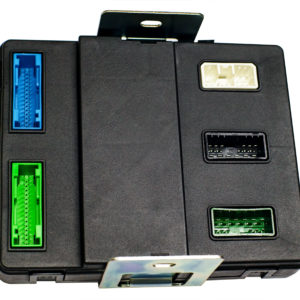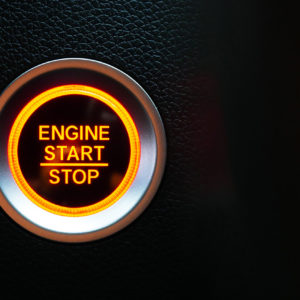Lifters are vital parts of your vehicle’s engine that do exactly as their name indicates. Formally called valve lifters and, informally, tappets, lifters temporarily open the intake and exhaust valves at the appropriate moments. Lifters also minimize valve lash, keeping the knocking and rattling down for a smoother and quieter driving experience.
Like any other part, lifters can develop issues because of wear or premature failure. Since they’re critical engine parts, they can cause severe problems if they fail. But exactly what can bad valve lifters cause in your car or truck?
What Can Bad Lifters Cause?
Faulty lifters can cause severe damage to the engine. In the worst-case scenario, you might have to rebuild the entire engine or install a replacement.
Many valve lifters are roller bearing. Instead of ball-shaped bearings, they use needle-shaped bearings to minimize friction between their moving parts.
If the lifter’s roller bearing fails, its needle bearings can escape from the lifter and enter the engine. The runaway needle bearings can damage the crankcase interior and get caught between the cylinder wall and the piston skirt.
We don’t recommend running the engine if it’s got a damaged lifter and needle bearings bouncing inside it. The escaped bearings can inflict significant damage on the cylinder walls and pistons.
Depending on the severity of the damage, you might have to rebuild the engine. It’s a big job that calls for replacement parts like bearings, gaskets, pistons, and rings. Furthermore, you might have to make additional modifications to the engine, such as boring the cylinders out to prevent another breakdown.
Can Bad Valve Lifters Cause Excessive Valve Lash?
Yes, an issue with one or more valve lifters can lead to excessive valve lash. But what is valve lash?
Valve lash is the gap between the rocker arm and the valve stem. It’s vital for valves and other engine components that expand in volume at very high temperatures. Sufficient amounts of valve lash let the intake and exhaust valves run smoothly.
While the engine needs some valve lash to account for thermal expansion, too much lash will cause problems. Excessive valve lash makes parts knock and rattle, wearing them out faster and possibly damaging them.
Some valves need occasional adjustment to keep the valve lash at the recommended amount. Other valves can adjust themselves, although you might also need to adjust them.
A bad valve lifter can increase the amount of valve lash to excessive levels. You will hear and feel the knocks and rattles when the lash gets out of hand.
Read more about the symptoms of bad lifters.
Tips For Bad Lifters
Are you worried about the state of your vehicle’s lifters? Here are some helpful tips that can help you identify a bad lifter and take steps to prevent or fix it:
Bad Lifter Symptoms
The most common symptom of a bad lifter is knocking and rattling while driving your vehicle. These are caused by excessive valve lash.
Sometimes, you might hear noise from the lifter. You might also hear a ticking sound, usually made by the camshaft lobe as it wears. Don’t drive your car if you hear a ticking noise.
Identifying Bad Valve Lifters
If you find any symptoms of a bad lifter, check the intake and exhaust lifters to identify which one has failed. You’ll usually need to remove the intake manifold first to access the lifters.
Check the roller part of each lifter for segments that have visible damage or feel rough to the touch. Next, move the roller and look for any resistance to the rolling motion, such as hesitation or hitching.
You can usually identify failed needle bearings because they slide or stick. Their incorrect movement creates a flat spot that prevents the bearings from rolling.
You can test the needle roller bearings by drawing them across sensitive skin like the inside of your forearms. Feel for hitching and rough rolling. If you detect one or the other, it means that the bearings are damaged. Rebuild or replace the bad lifter.
Get Expert Opinion
Even if you don’t find anything wrong, it’s best to get a second opinion from an expert. Bring your vehicle to its manufacturer or a trusted professional mechanic for an inspection. They might catch something that you missed.
Install New Roller Lifters With Bushings
You can eliminate the risk of breakaway needle bearings by installing new bushing roller lifters, which use bushings instead of metal bearings.
However, bushing lifters have their own special requirements that might not fit your needs. Think carefully about the pros and cons before committing to replacing the existing roller bearing lifters.
Keep the Engine Oil Clean
Bushing lifters depend on clean engine oil to reach their maximum performance and service life. The bushings wear out faster when exposed to dirty oil.
If you want to make the bushing lifters last as long as possible, you must change the engine oil more often. Change the oil whenever the lubricant looks dirty.
You also have to drive your vehicle regularly. Leaving engine oil sitting still for long periods will reduce its viscosity, making it thinner and less effective. The unused oil will also accumulate more contaminants, which can damage the bushing lifter.
Last but not least, you must run the engine long enough to raise the oil temperature above 212 degrees F. That temperature is the boiling point of water. If the engine oil has water in it, the liquid will evaporate. Furthermore, the water vapor carries many impurities away, helping to keep the oil clean.
Needle bearing roller lifters can tolerate dirty engine oil, reducing the frequency of oil changes. You’re essentially trading more maintenance for peace of mind about the risk of needle bearings bouncing inside the engine.
Getting Your Hands on Replacement Lifters For Your Vehicle
It’s important to replace bad lifters as soon as you get the chance. This can be tricky if you don’t know where to look for quality parts online.
With the help of CarParts.com, finding replacement auto parts has never been easier.
All you need to do is visit our website or download our mobile app. Use our built-in vehicle selector to check for fitment, and toggle our search filters to shop according to your preferred brand, quantity, or price range.
We make sure to get our lifters from some of the most reliable names in the industry; each item is hand-picked by a team of professionals to guarantee both quality and longevity. You won’t have to worry about any replacements you order letting you down any time soon.
Our distributions are equipped with advanced technologies to ensure your orders are packed and shipped as efficiently as possible. Orders placed before 12 noon EST may arrive in as fast as two business days.
Don’t hold off on replacing your vehicle’s lifters. Browse our catalog today.
Any information provided on this Website is for informational purposes only and is not intended to replace consultation with a professional mechanic. The accuracy and timeliness of the information may change from the time of publication.































